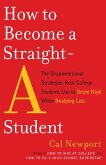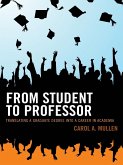"To My Professor: Student Voices for Great College Teaching" begins with remarks by students about their professors. They tend not to be the kind of remarks that professors usually hear, and some are harsh. Others are full of gratitude for teachers who inspire and motivate. The "To My Professor" statements are really just starting points that lead to advice from master teachers. Teaching college is difficult and this book has some potential solutions. More than 50 chapters cover situations including expectations, communication, technology, race, gender and religion, mental and physical health.
Hinweis: Dieser Artikel kann nur an eine deutsche Lieferadresse ausgeliefert werden.
Hinweis: Dieser Artikel kann nur an eine deutsche Lieferadresse ausgeliefert werden.








